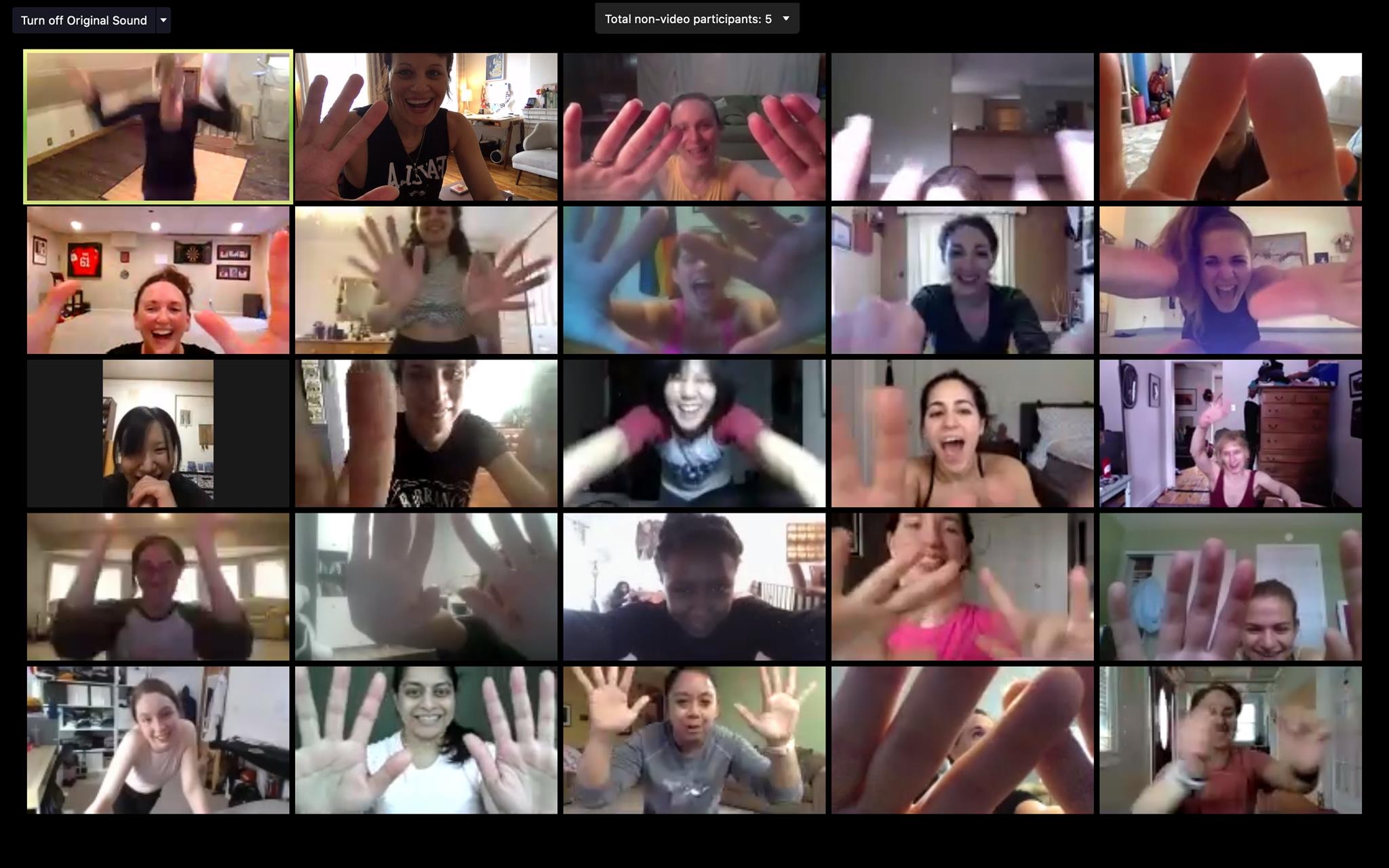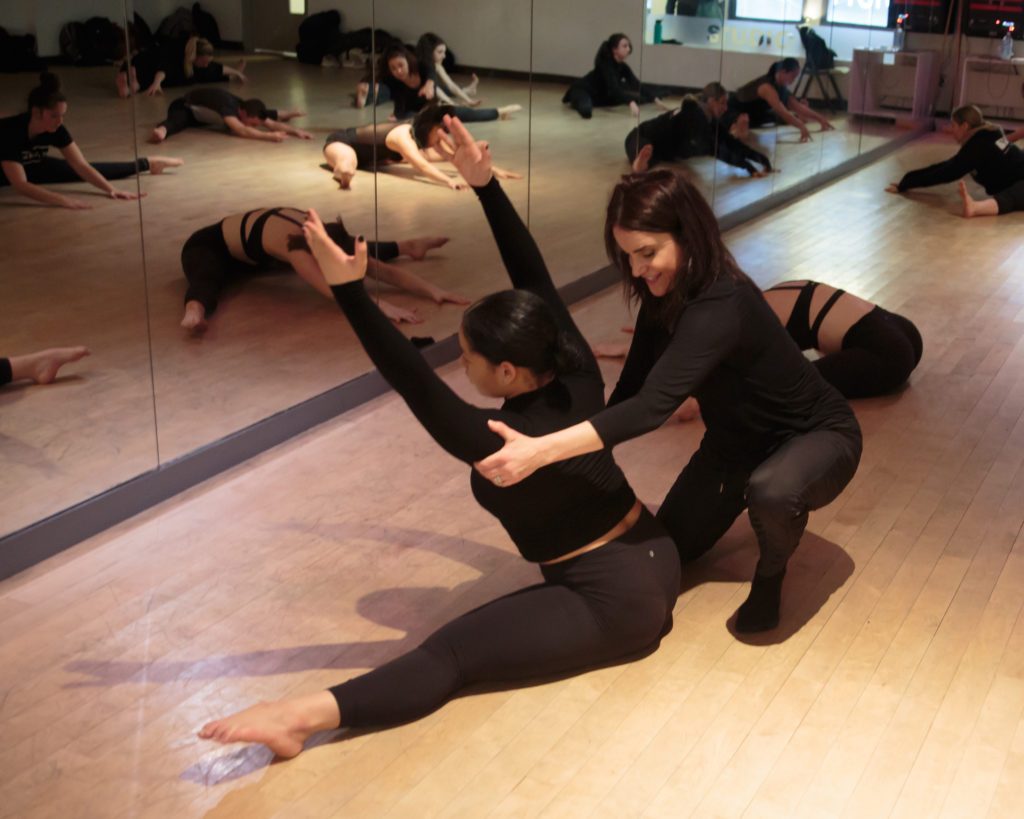
When the coronavirus hit in March of 2020, many dance educators wondered how they’d be able to transfer their teaching to the virtual space, with little time for a learning curve. Even as some teachers have been able to return to the studio in the past year, ever-shifting safety protocols and guidelines varying by state have made things even more confusing and unpredictable.
Yet overall, teaching artists have made it work, adapting with ingenuity, grace and resilience. At this one-year anniversary of COVID-19, we asked six dance educators the biggest teaching lesson they’re taking away from the past year.
Emily Bufferd
Jazz and contemporary faculty, Broadway Dance Center and Steps on Broadway; producer of The Young Choreographer’s Festival
“My ability to articulate what I am asking of a dancer has never been better. I’ve shifted on Zoom to be even more explanatory with my verbiage while teaching. Whereas when I was in the studio, I was able to rely more on a shorter explanation, and very likely a hands-on correction, now I explain everything. While I’m warming up, I’ll talk through every detail, and when we get to the phrase, I am always sure to say which side, which facing, where the action should be starting and finishing in space, and then of course to remind students that it’s important to make it work for the space that you’re dancing in.”
The lesson: Virtual classes call for overcommunicating—which can be useful back in the studio, too.
Todd Shanks
Program coordinator, Joan Phelps Palladino School of Dance at Dean College; jazz and tap faculty, Dance Educators of America
 Courtesy Shanks
Courtesy Shanks “The biggest teaching lesson I have learned since March 2020 is ‘kick-ball-change.’ Let me explain: When Dean College made the decision to not return to campus in March, my heart sank. Being an educator is who I am, and for me that means being in the classroom every day sharing with my students.
“When we moved online I was lost, because at the time we decided to teach asynchronous coursework. I tried to make videos for the students, but I found myself missing the feedback loop of a dance class. Not just me telling the students what they did right or wrong, but them giving me feedback in their body language and energy. And while they would send videos to me to critique, it just wasn’t the same. I felt useless.
“But as I looked back at the hours and hours I spent researching Zoom settings, choreographing combinations to take place in tiny spaces, adjusting and adapting my coursework, it dawned on me: I wasn’t useless, I just needed to kick-ball-change. I just needed to transition and move to the next format.
“It isn’t that we as dance educators aren’t used to change, we just normally had a few months or even years to adjust. So what I learned is that when you need to get your feet back under you and find your place, just kick-ball-change. I doubt the audience will ever know the difference.”
The lesson: Educators can use teachings from inside the studio to adapt outside the studio.
Sheila Barker
Jazz faculty, Broadway Dance Center; adjunct instructor of jazz dance, Marymount Manhattan College
“The limitless creative possibilities that I believed were a part of my teaching experience before COVID weren’t as limitless as I thought. I now feel I was a bit stagnant in the structure-building of my classes: the way I was connecting with my students during and after class, and even how I was creating movement content.
“How did I come to realize this? COVID happened and shut everything down. So all the noise stopped. It just became a space for me to be still, to listen, to see, to reinvent without the fast pace, cloudiness and interference of life.
“Now, I’ve found a better way of using specific visual details to guide students. I give them warm-up exercises that have them using a big exhale as the way to release out of the movement. I make sure my online students come to the screen to meet me and their classmates to begin our connecting before I start class.”
The lesson: Taking time to pause can revitalize your teaching.
Jennifer Kuhnberg
Jazz, lyrical, ballet, modern and contemporary instructor, Arlington Dance Place and Cheryl A. Sullivan’s School of Dance; director of OnStage Dance Company
“While I’ve been teaching dance in person since September 2020, the majority of my students are doing their regular school online. This means their dance class is often their only opportunity for meaningful interaction with their peers and substantial physical movement after being stuck in front of a screen most of the week. If there ever was a time to loosen the reins on the strict discipline, it’s now!
“I talk with my students a lot more in class. Why is dance especially important at this time? What benefits do we get from moving and creating? How can our improvisation reflect the negative emotions we might be feeling, but also be a positive outlet to create something new and exciting? It’s been a great opportunity to explore how dance can have wonderful therapeutic powers!”
The lesson: Sometimes it’s best to ease up on discipline, and communicate the “bigger picture” of dance.
Ginger Cox
Jazz and contemporary faculty, Broadway Dance Center; adjunct associate professor of dance, Pace University
 Eric Bandiero, courtesy Cox
Eric Bandiero, courtesy Cox “The lesson I’d like to share is the importance of community. Creating a classroom environment that feels like ‘We’re in this together’ helps keep the energy uplifted and positive. We are all more than our ‘little squares,’ so finding ways to maintain a connection is key.
“Some things I like to do are: allow time for dancers to introduce themselves at the beginning of class; give individual feedback to each dancer so they each feel included; give dancers the opportunity to contribute ideas and ask questions. Sometimes I’ve asked dancers to move all the way down in front of their cameras and to do the combination at a close proximity, looking into the camera and focusing on eye contact and projection so that we can see their faces, rather than just presenting the material.”
The lesson: Community is imperative, and it must be created intentionally.
Alice Kim
Ballet teaching artist at The Gabriella Foundation’s Everybody Dance! program
 Stacy Armao, courtesy Kim
Stacy Armao, courtesy Kim “The biggest teaching takeaway I’ve had has been to shift my focus toward the students’ mental health first; the teaching would become the secondary goal. A few months after COVID hit, the students and I had a heart-to-heart discussion where we just checked in about how they were all doing—I knew they had been struggling, but some were bursting into tears because they were overwhelmed by the quarantine, burnt out from online schooling, and stifled by not being able to go outside at all.
“It humbled me and made me realize that as a teacher, my first duty was to create a safe space where the students could breathe, express and simply enjoy their time in class. It was my job to create a space where they could forget about everything that was happening in the world and just dance.
“I backed off from pushing the kids to always dance 100 percent of the time. Instead, I added in regular mental health check-ins and meditation at the end of class. What’s interesting is that I thought this would slow down the process of learning; instead, my students have actually been learning and performing better because they have been feeling better in class.”




